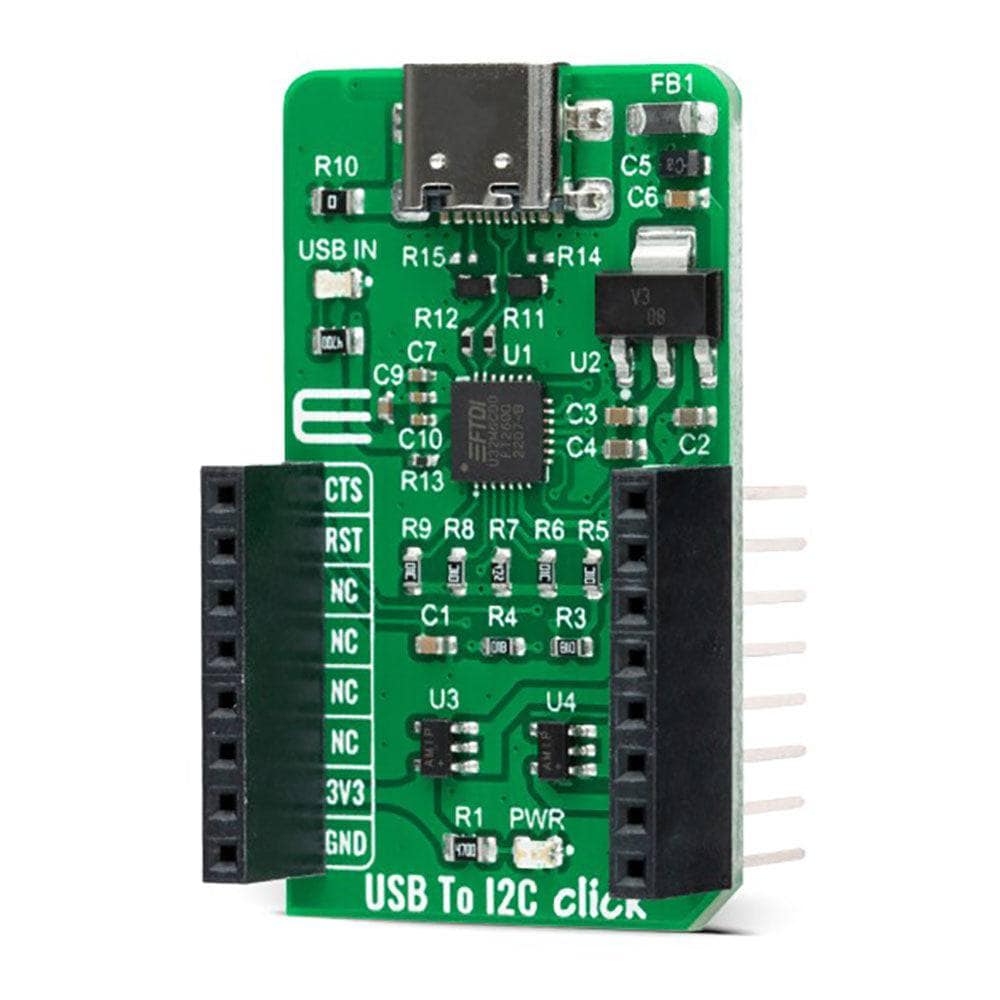
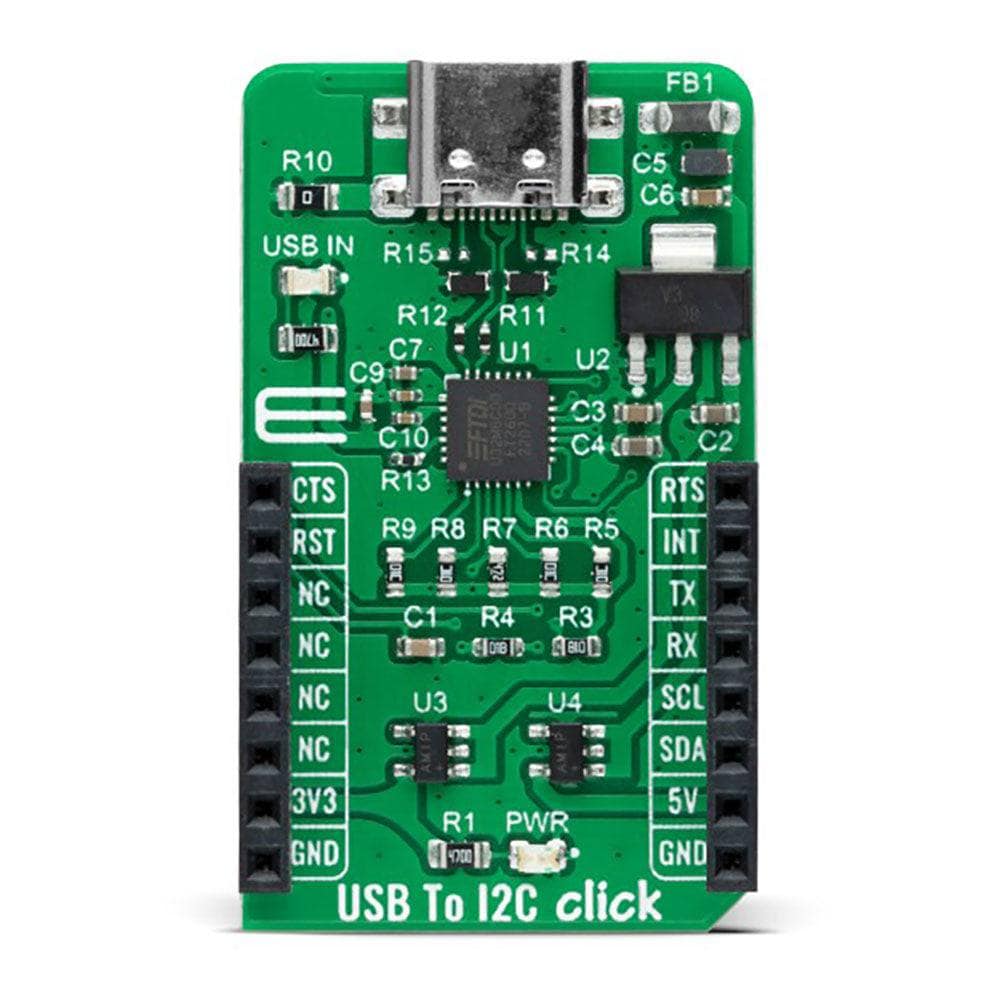
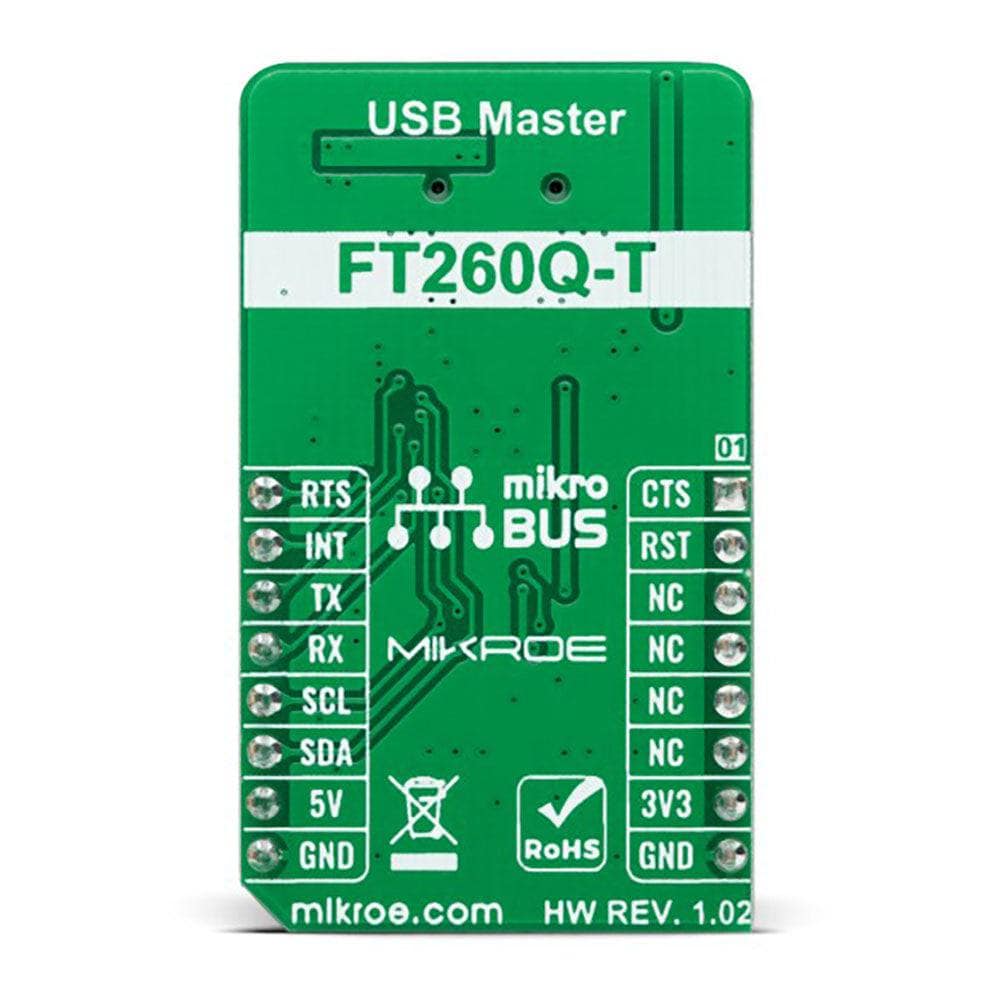
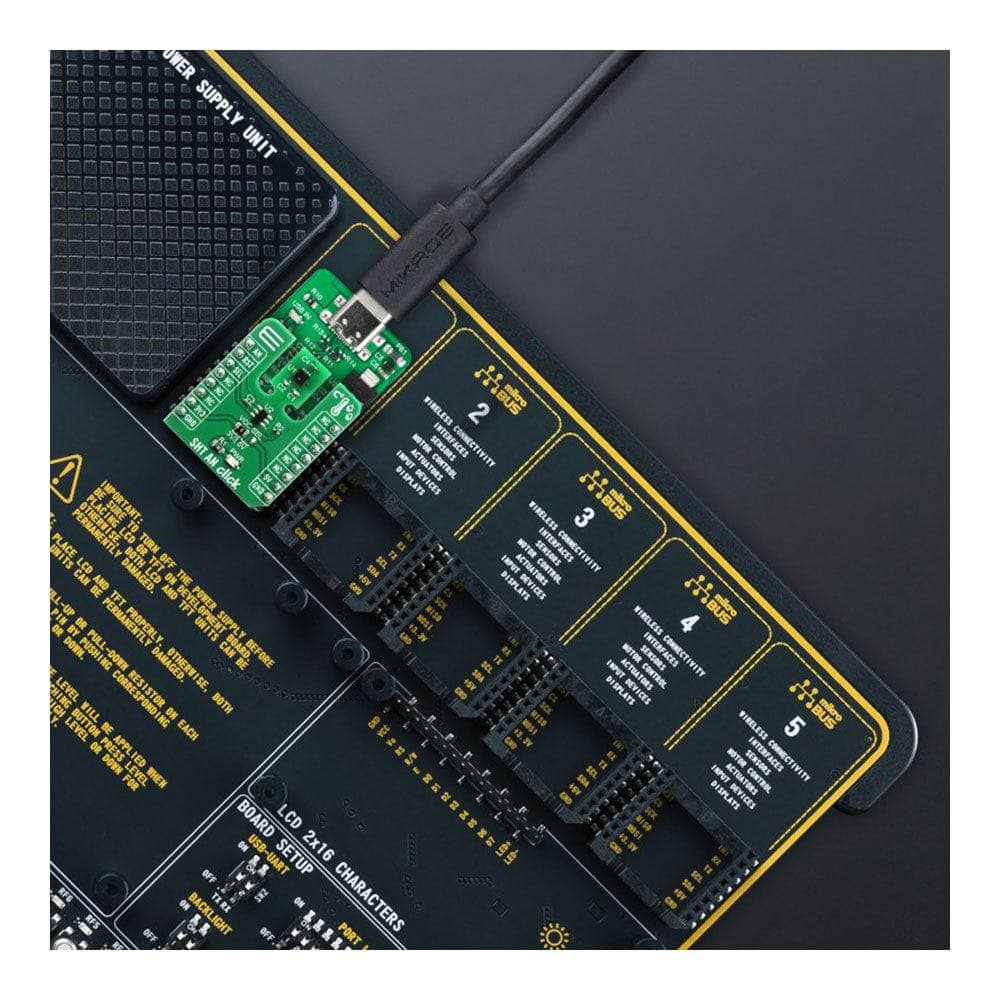
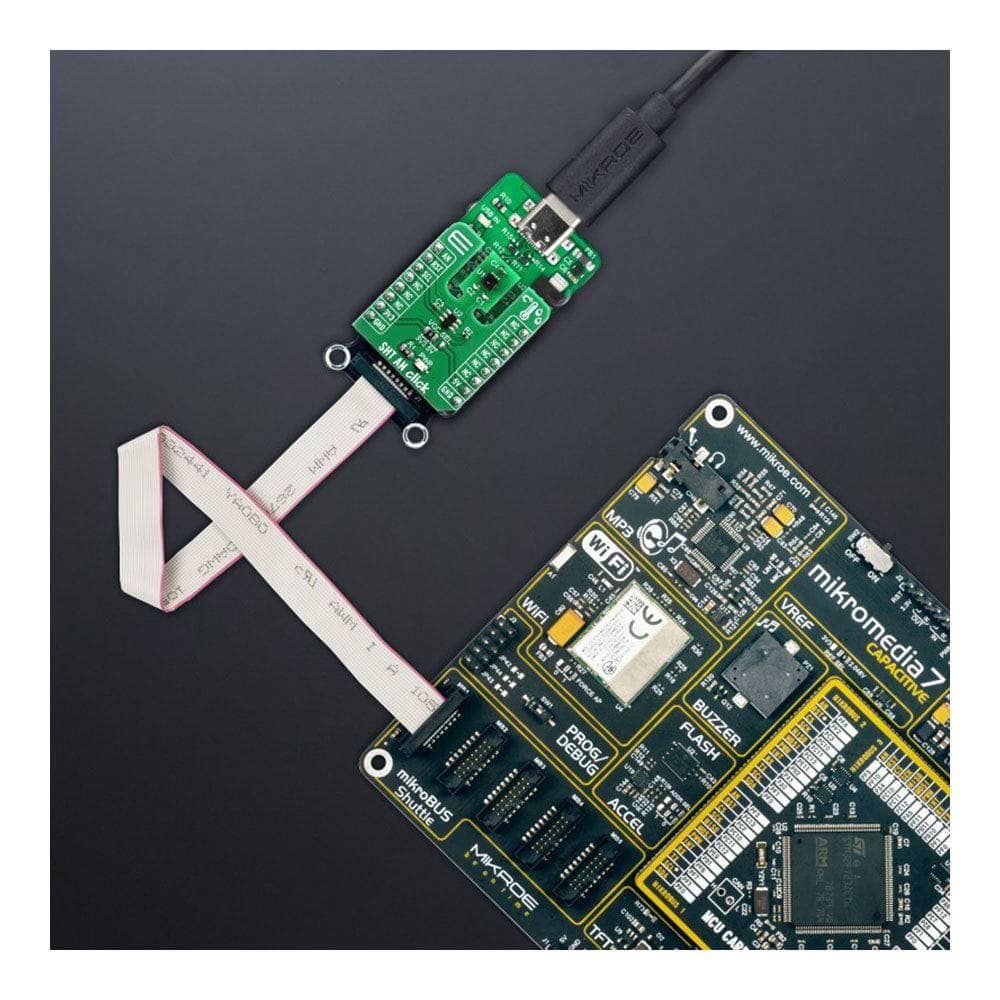
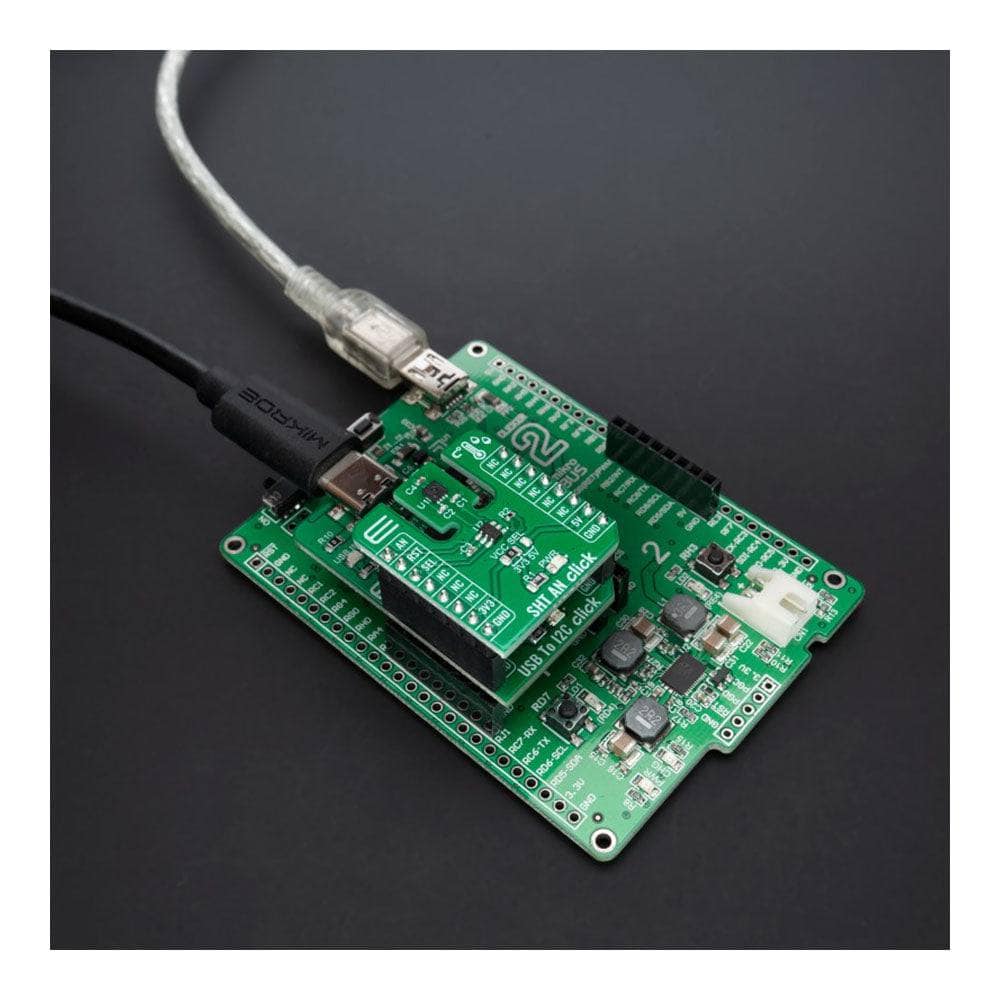
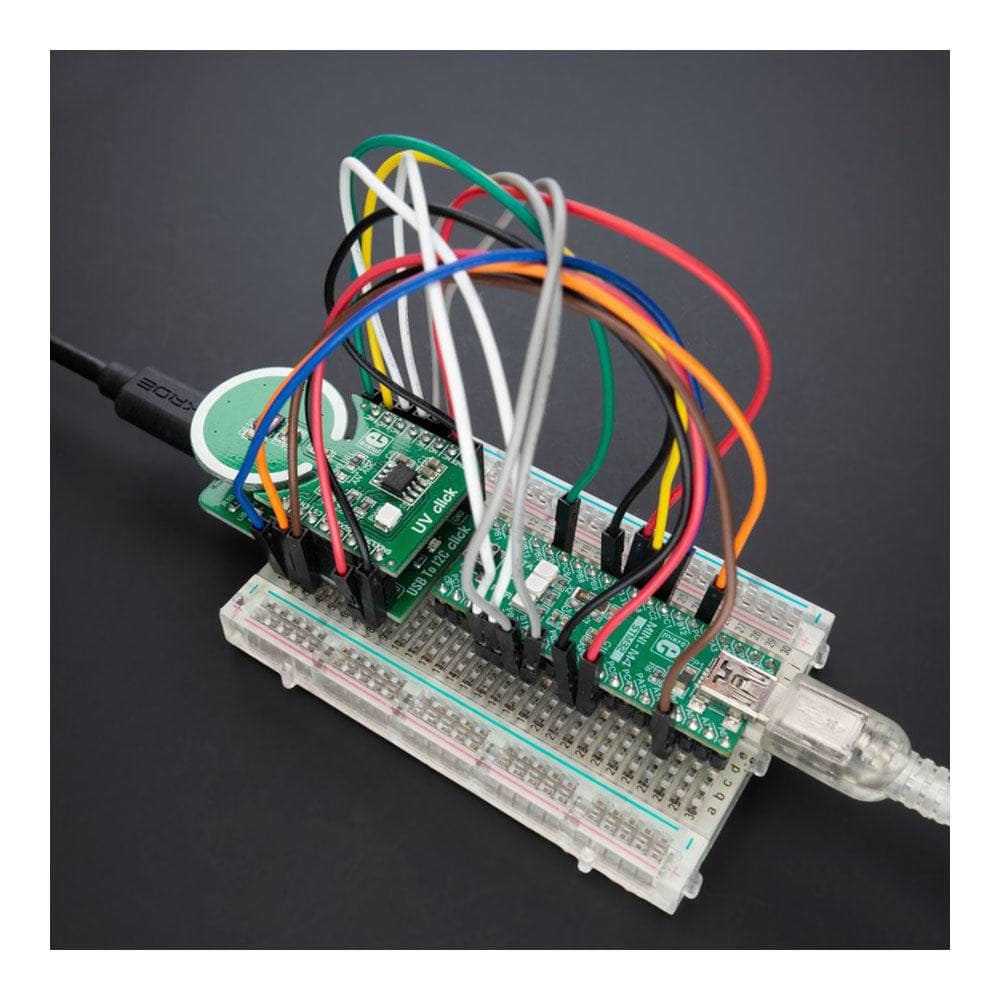
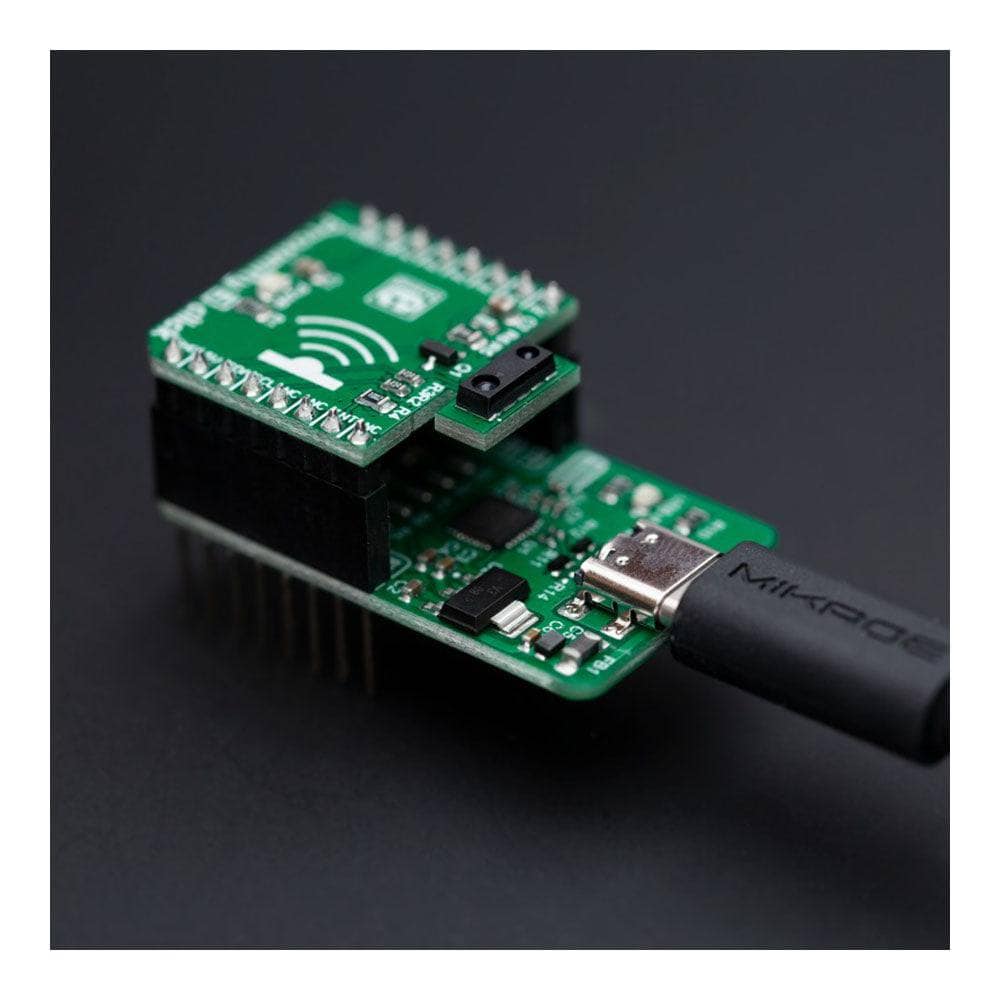
Key Features
Overview
The USB to I2C Click Board™ is a compact add-on board with a general-purpose USB to I2C serial interface. This board features the FT260, an interface device controller that provides a bridge between standard USB Human Interface Device (HID) class drivers and an I2C or UART slave device from FTDI. The FT260 is highly-integrated with a USB 2.0-compliant full-speed (12Mbps) transceiver, oscillator, LDO regulator, and on-chip eFUSE. It is supported by most operating systems where a custom driver is not required. With the possibility of use as a standalone device, this Click board™ provides an ideal, fast-to-implement bridge between USB and either UART or I2C peripherals.
The USB to I2C Click Board™ is supported by a mikroSDK compliant library, which includes functions that simplify software development. This Click board™ comes as a fully tested product, ready to be used on a system equipped with the mikroBUS™ socket.
Downloads
Das USB-zu-I2C-Click-Board™ ist eine kompakte Zusatzplatine mit einer universellen USB-zu-I2C-Seriellschnittstelle. Diese Platine verfügt über den FT260, einen Schnittstellengeräte-Controller, der eine Brücke zwischen standardmäßigen USB-Treibern der Human Interface Device-Klasse (HID) und einem I2C- oder UART-Slave-Gerät von FTDI bildet. Das FT260 ist hochintegriert mit einem USB 2.0-kompatiblen Full-Speed-Transceiver (12 Mbit/s), Oszillator, LDO-Regler und On-Chip-eFUSE. Es wird von den meisten Betriebssystemen unterstützt, für die kein benutzerdefinierter Treiber erforderlich ist. Mit der Möglichkeit der Verwendung als eigenständiges Gerät bietet dieses Click-Board™ eine ideale, schnell zu implementierende Brücke zwischen USB und UART- oder I2C-Peripheriegeräten.
Das USB-auf-I2C-Click-Board™ wird von einer mikroSDK-kompatiblen Bibliothek unterstützt, die Funktionen enthält, die die Softwareentwicklung vereinfachen. Dieses Click-Board™ wird als vollständig getestetes Produkt geliefert und ist bereit für den Einsatz auf einem System, das mit der mikroBUS™-Buchse ausgestattet ist.
| General Information | |
|---|---|
Part Number (SKU) |
MIKROE-5312
|
Manufacturer |
|
| Physical and Mechanical | |
Weight |
0.02 kg
|
| Other | |
Country of Origin |
|
HS Code Customs Tariff code
|
|
EAN |
8606027387760
|
Warranty |
|
Frequently Asked Questions
Have a Question?
Be the first to ask a question about this.








